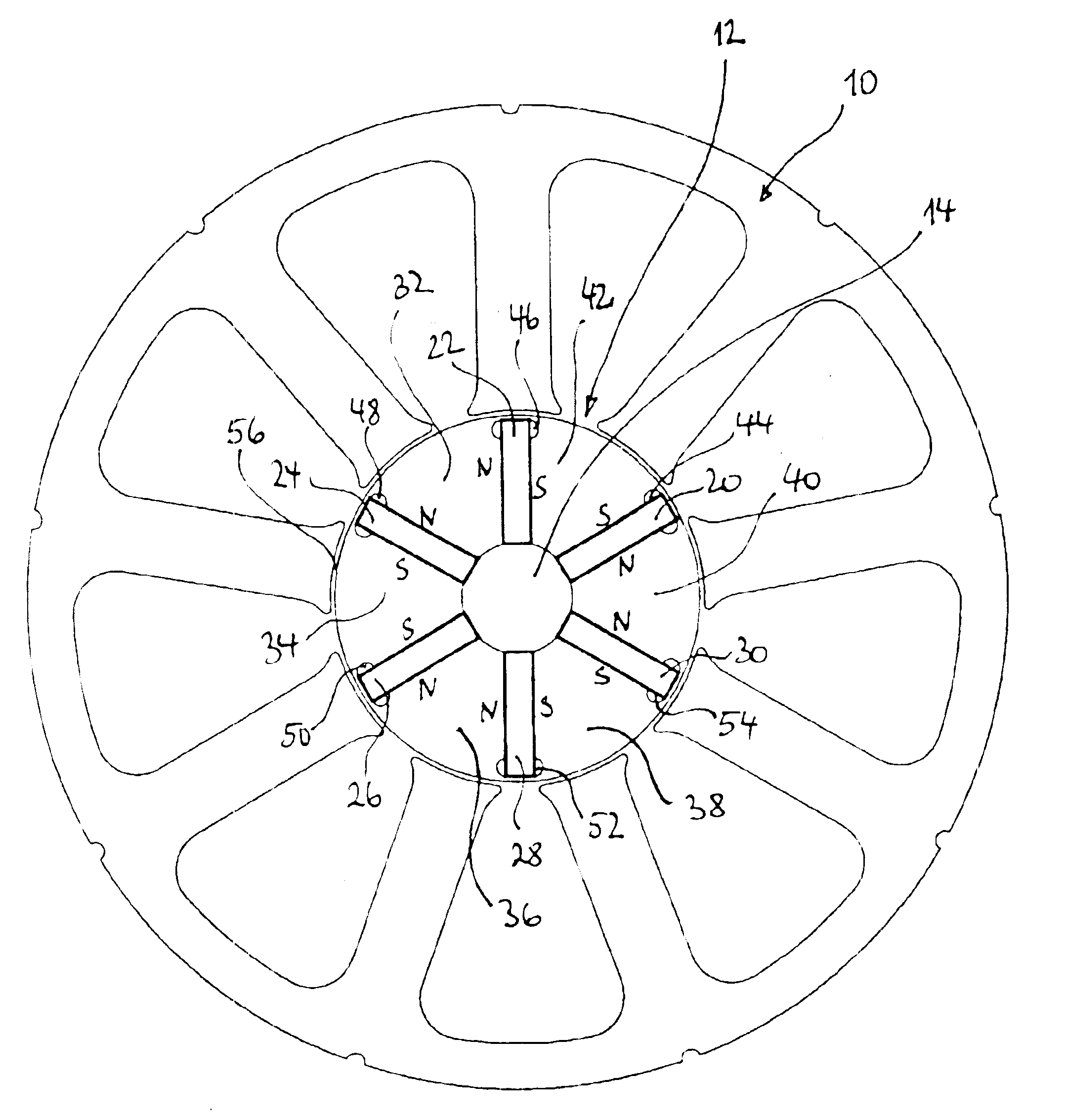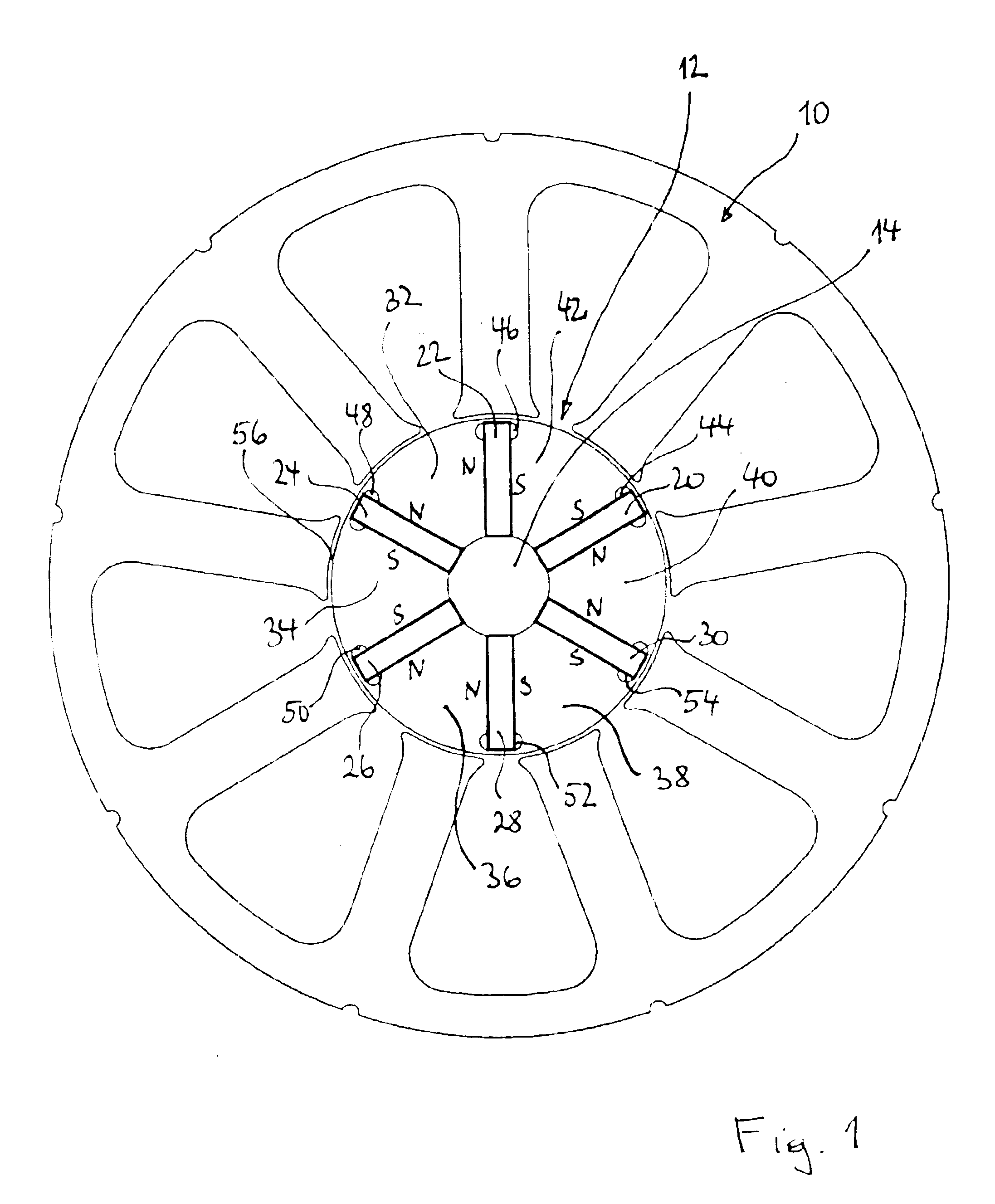Rotor assembly for a permanent magnet electrical machine comprising such a rotor assembly
a technology of permanent magnets and rotors, which is applied in the direction of dynamo-electric machines, magnetic circuit rotating parts, and shape/form/construction of magnetic circuits, etc. it can solve the problems of loss of torque, inefficient use of magnet energy dissipation in this area, and the effect of permanent magnets producing cogging torque effects
- Summary
- Abstract
- Description
- Claims
- Application Information
AI Technical Summary
Benefits of technology
Problems solved by technology
Method used
Image
Examples
Embodiment Construction
[0029]FIG. 1 schematically shows a sectional view through a permanent magnet motor according to the present invention. The motor comprises a stator 10 and a rotor assembly 12 according to the present invention. The rotor assembly 12 is mounted on a shaft 14. The rotor assembly 12 comprises a rotor body 18, comprising a magnetic core and a yoke, and permanent magnets 20, 22, 24, 26, 28, 30. Magnet poles 32, 34, 36, 38, 40, 42 are formed between the permanent magnets 20 to 30. The magnetisation of the core material of the rotor body 18 is indicated by N (north) and S (south) in the drawing.
[0030]The permanent magnets 20 to 30 are embedded in slots (FIG. 2) in the rotor body 18, the slots having end sections 44, 46, 48, 50, 52, 54 of enlarged widths. These end sections 44 to 54 can be formed by recesses or notches provided in the end sections of the slots near the outer periphery of the rotor body 18.
[0031]Further, an air gap 56 is provided between the stator 10 and the rotor assembly ...
PUM
 Login to View More
Login to View More Abstract
Description
Claims
Application Information
 Login to View More
Login to View More - R&D
- Intellectual Property
- Life Sciences
- Materials
- Tech Scout
- Unparalleled Data Quality
- Higher Quality Content
- 60% Fewer Hallucinations
Browse by: Latest US Patents, China's latest patents, Technical Efficacy Thesaurus, Application Domain, Technology Topic, Popular Technical Reports.
© 2025 PatSnap. All rights reserved.Legal|Privacy policy|Modern Slavery Act Transparency Statement|Sitemap|About US| Contact US: help@patsnap.com



